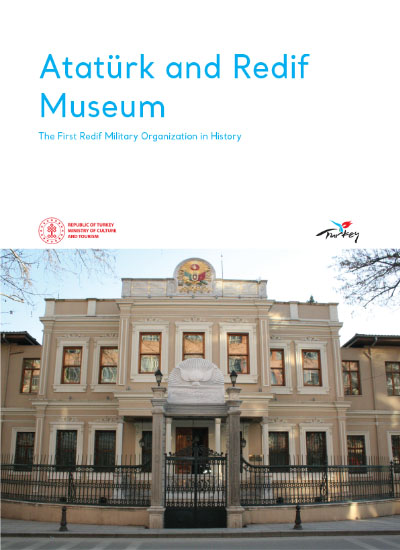Following the Edict of Gülhane in 1843, Ottoman territories were divided into five major army regions. The Redif Organisation was established as the reserve force for these armies. Each regional centre of the organisation had general headquarters, meeting places, and storage centres. The first headquarters of the Redif Organisation was located in İzmit, and the İzmit Redif Office was constructed alongside the Kasr-i Humayun during the reign of Sultan Abdulaziz (1861-1876), by the İzmit Governor Hasan Pasha. According to a document in the Ottoman Archives dated 1886, the military depot in İzmit and the adjacent house were destroyed by fire. Another document from 1889 mandates the official opening of a new warehouse, ammunition, and military service building. The building's inscription is dated 1889-1890, but the architect is unknown. The warehouse and ammunition located behind the structure, marked in old city maps and visible in the photograph of Yıldız Photo Albums, are no longer present. The building served as a Military Court until the earthquake in 1999, which caused significant damage. After restoration was completed in 2011, the building reopened in 2012 as the Atatürk and Redif Museum. The room to the left of the entrance displays photographs and names of 86 national struggle heroes who were martyred in June 1921, including Yahya Kaptan, Kara Fatma, and İpsiz Recep. The lower floor's large hall presents military ceremonial items, weapons, swords, silver kitchen utensils, and textile artifacts belonging to the elite culture of the Ottoman Empire. The upper floor of the right wing hall displays photographs of Mustafa Kemal Atatürk and his comrades from the National Struggle Period. Noteworthy exhibits include a panel featuring Mustafa Kemal's words about Izmit in 1922 and a photograph of Nurettin Pasha with his soldiers in front of Kasr-ı Humayun. On the upper floor of the central section, in two small rooms on the right and left, there are panels displaying copies of the edicts of Sultan Mehmet the Conqueror regarding the free religious life of the clergy of Bosnia and Jerusalem, and the edicts of Sultan Süleyman the Magnificent regarding the prevention of illegal tax collection. The small room adjacent to this one contains photographs summarising Mustafa Kemal's registry, including images of the yacht Savanora where he spent his final days, the funeral ceremony held in Dolmabahçe Palace where he passed away, his body being brought to Izmit on the battleship Yavuz, and his final journey to Ankara by train. The central hall features a table, armchairs, an etagere, and a telephone that were used by Mustafa Kemal. The mirror exhibited in the hall was taken from Atatürk's Savanora yacht. The carpet on the floor was woven at the Hereke carpet factory.
ATATÜRK and REDİF MUSEUM


